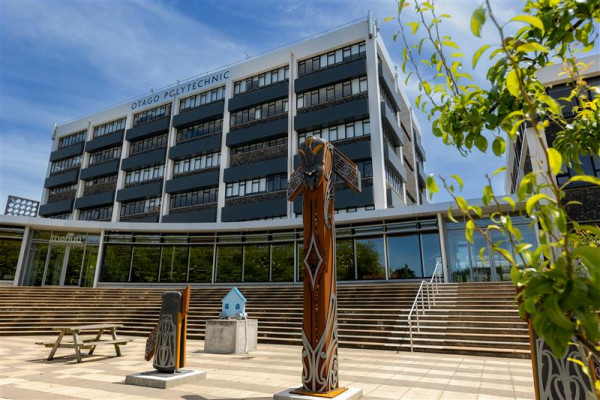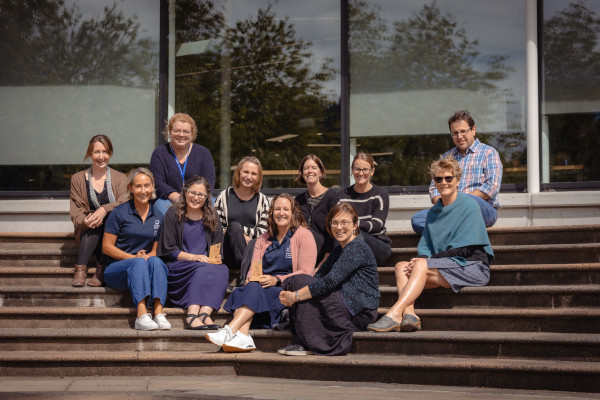- Tūhono home Hoki ki Tūhono
-
- Staff Directory
- Chief Executive Office Auckland International Office Corporate Services Finance Campus Services Functions and Catering Information Systems and Support Marketing, Communications and Engagement Learner Journey Academic Registry International Learner Services Te Punaka Ōwheo
- Learner Experience Academic Excellence Central Campus College of Community Development and Personal Wellbeing College of Engineering, Construction and Living Sciences College of Health College of Work Based Learning Open Education Resource/OERu Research and Postgraduate Studies Te Maru Pumanawa | College of Creative Practice and Enterprise
- Māori Development and Kaitohutohu Office People, Culture & Safety People and Culture Childcare Centre Te Ama Ako | Learning and Teaching Development Wellbeing and Safety Auckland Staff Directory Executive Office Academic Corporate Services Marketing and Business Development Human Resources Campus Quality and Programme Development
-
 Our people make a better world
Our people make a better world
We build the capabilities of individuals, organisations and communities and help them to realise their potential.
Staff Directory
-
- Tools
- Academic Integrity Declaration Form AIC Applications Dashboard Approved Programmes Approved Programme Fees Centralised Assessement Repository Chemwatch CMS - Tūhono & StudentHub updates Course Evaluation and Surveys CRM Applications CRM customer service hub Delegations policy/process Disability and Neurodiversity Dynamics 365 (CRM) EBS Ontrack EBS Report Email Security Personal Portal Employment Matters / Solarworkplace eTaxi eTV
- Financial Variance Reporting Hidden Disabilities Sunflower programme FCM travel intranet InPlace International entry requirements Knowledgebase articles Learner Capability Learner Support Dashboards Linkedin Learning Log a job with Marketing Login as an applicant Microsoft 365 Moderation App Moodle OP Docs OP Docs - Publishing OP Image Libraries Performance Excellence Portal Product Evaluation Panel
- Policy Library Privacy Programme and Course Design and Development Qualtrics XM RDS Remote Access Support Portal Research Database Robertson Library Staff FAQs about Graduation Status of Programmes Student Hub (Kāpehu demonstration view) Study Abroad info for learners Te Whare (Te Pūkenga intranet) Tūhauora I Wellbeing resources Uniprint Vault Webexpenses Auckland Tools
-
 Vault
Had an accident or near miss?
Log it here
Vault
Had an accident or near miss?
Log it here
-
- Communities
- Community AI Steering Committee Ally Network EBS Community of Interest EdTech Champions Health & Wellbeing Research Internal Evaluation Neurodiversity Professional Team Professoriate Proud@OP Student Support Website Advisory Group Web Champions Working under the Rainbow Project Learner Capability Trade Training Centre
- Committee Academic Committee Animals@OP Diversity and Equity Doctor of Professional Practice Committee Kaunihera Whakahaere - Leadership Council Internal Evaluation Learning & Teaching Leadership Team Library Committee Mental Health and Wellbeing Advisory Group Otago Polytechnic Board of Directors Pastoral Care Code Committee Programme Approvals Committee Research and Postgraduate Committee Research Ethics Committee Staff Subcommittee
- Think Tanks Mātauraka Our learners achieve educational success Pūtea Our financial success Tākata Our people, our team, our community Tiriti Our active commitment as a Treaty partner Tūroa Our commitment to be a sustainable and responsive organisation
-
 Create a community
Create a community
Do you have a community, committee or project that you'd like represented here?
Communities
-
- About OP
- Keep up to date All news All events All notices All blogs Share your info Create a news article Create an event Create a notice Create a blog
- Community and Partnerships Alumni and friends Education Foundation Operational information Academic calendar 2025 Academic calendar 2026 Current vacancies Dunedin campus map Our policies Te Whare (Te Pūkenga intranet) Topical FAQs
- Who we are Commemorative sites Māori Strategic Framework Our history Our strategic priorities Pasifika Strategic Framework (2025-2030) Vision and Values Working for us OP job opportunities Wellbeing Calendar Working at OP
-
New Zealand: 0800 762 786
contact us
International: +64 3 477 3014
Midwives' facilitation of physiological placental birth: A Delphi study
Author: Deb Beatson
Midwives’ facilitation of physiological placental birth: A Delphi study
Deb Beatson
26 January 2021
Abstract
In Aotearoa New Zealand (NZ), it is common for women to have a physiological placental birth (PPB) following a physiological birth. In this context, evidence suggests that PPB results in less blood loss than does active management, and a lower incidence of postpartum haemorrhage (PPH). However, there is minimal literature about midwives’ experience and knowledge about PPB.
The study aimed to uncover how midwives in NZ facilitate PPB. Objectives included reaching consensus about a definition of PPB and aspects of practice which support midwives to support women to achieve a PPB following physiological labour and birth. The research question explored was “what do midwives in NZ do to facilitate physiological placental birth, following physiological labour and birth?”.
The Delphi technique, an iterative quantitative non-experimental survey method used for obtaining consensus of expert opinion on a topic was employed. The participants individually respond to the questions posed. The researcher reviews the expert responses and modifies the tool, which is then sent to the same participants, and the process of review and revision is continued aiming for 80% consensus.
Eighteen participants were recruited for their expert experience with PPB, with 14 continuing to the third and final round of the survey. The expert inclusion criterion employed was: Lead Maternity Carer midwives in NZ who provide PPB care for at least 30% of their caseload, and who have a postpartum haemorrhage rate of less than four percent (this based on the criteria used in the MEET study (Begley et al., 2012)).
The data was analysed using descriptive statistics with 13 resulting statements reaching consensus. These statements included a definition of PPB, factors which should be present or should be avoided in PPB, ways to facilitate PPB, and factors which influence decision making for supporting PPB. Four themes were generated following thematic analysis of the qualitative comments: understanding of and trust in physiology, supporting physiology (awhi), individualised care and continuous midwifery assessment. The importance of an upright maternal position, and methods of supporting physiology, particularly supporting the woman’s external environment, were highlighted. The technique of gentle cord traction (as opposed to controlled cord traction) to birth the placenta once it is in the vagina was endorsed by this group of midwives.
This distillation of midwives’ knowledge on PPB will add to the existing body of knowledge about placental birth. The findings are congruent with existing guidelines and models in NZ in the context of continuity of midwifery care and should give midwives confidence in the techniques uncovered.
Keywords: placenta, physiological placental birth, whenua, midwives, third stage of labour
Deb Beatson's thesis was supervised by Suzanne Miller and Jean Patterson.
License
This thesis is available under a Creative Commons Attribution-NonCommercial-NoDerivatives licence CC BY-NC-ND 4.0 International licence.
